Interview with Delphine Yagüe, project manager of the Medieval Route of Rachi in Champagne (supported by Aube en Champagne Attractivité and part of the Council of Europe’s European Route of Jewish Heritage) and director of the ‘Rachi-Troyes et “l’Aube en Grand Est” Public Interest Group, about the many projects to promote Jewish heritage in Aube in the footsteps of Rachi…
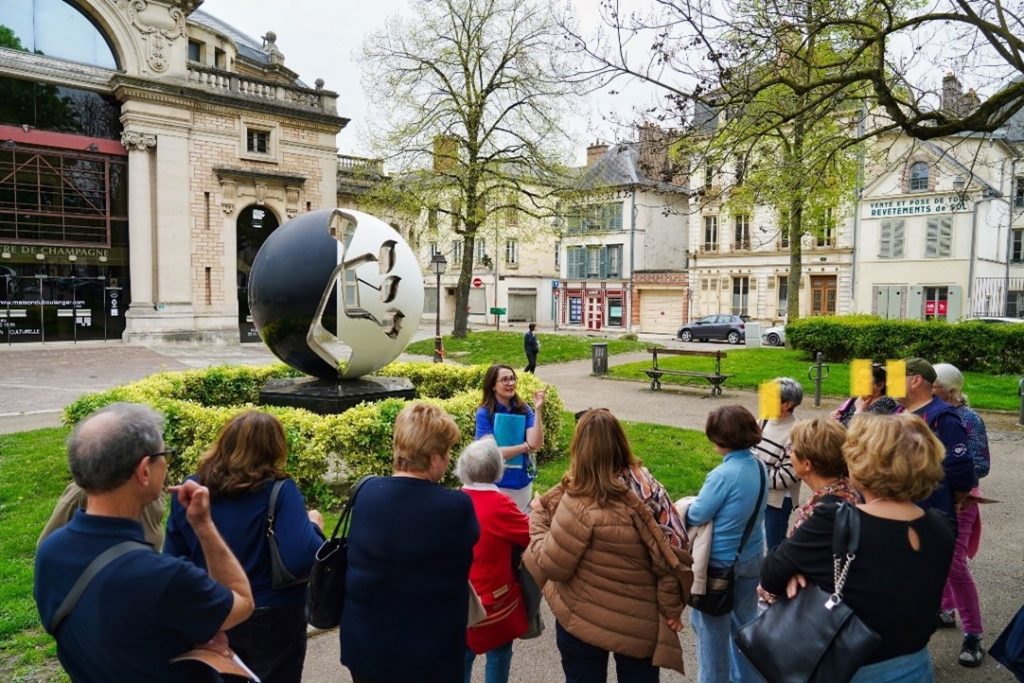
Jguideeurope: How did the Medieval Route of Rachi project come about?
Delphine Yagüe: In 2017, Maison Rachi was inaugurated on the premises of the Troyes synagogue. The quality and originality of this private cultural site, as well as the mediation offered to discover it, quickly won over a large number of local and foreign visitors.
In 2018, the Council of Europe overhauled the application criteria for membership of the Cultural Routes. The Jewish Heritage Route, piloted by AEPJ, offered a 3-year incubator to welcome new applicants. Aube en Champagne Attractivité responded and launched the Medieval Route of Rachi in Champagne project, surrounding itself with a renowned scientific council and bringing together the various partners already present in the region on the theme of Rachi: Rachi House, Rachi Institute, Troyes la Champagne Tourisme (Tourist Office of Troyes and its conurbation) and CulturistiQ. As well as those who wished to join them, such as the communes of Dampierre, Ramerupt and Lhuître, the Aube Archives and Heritage Department, etc.
The achievements of the partners and the projects of the Rachi Medieval Route in terms of communication, sustainable tourism development, promotion of heritage and memory, artistic creation and scientific research, enabled the Rachi Route to be approved immediately. It then joined the incubator for 3 years and developed its projects while officially becoming a member of the European Jewish Heritage Route.
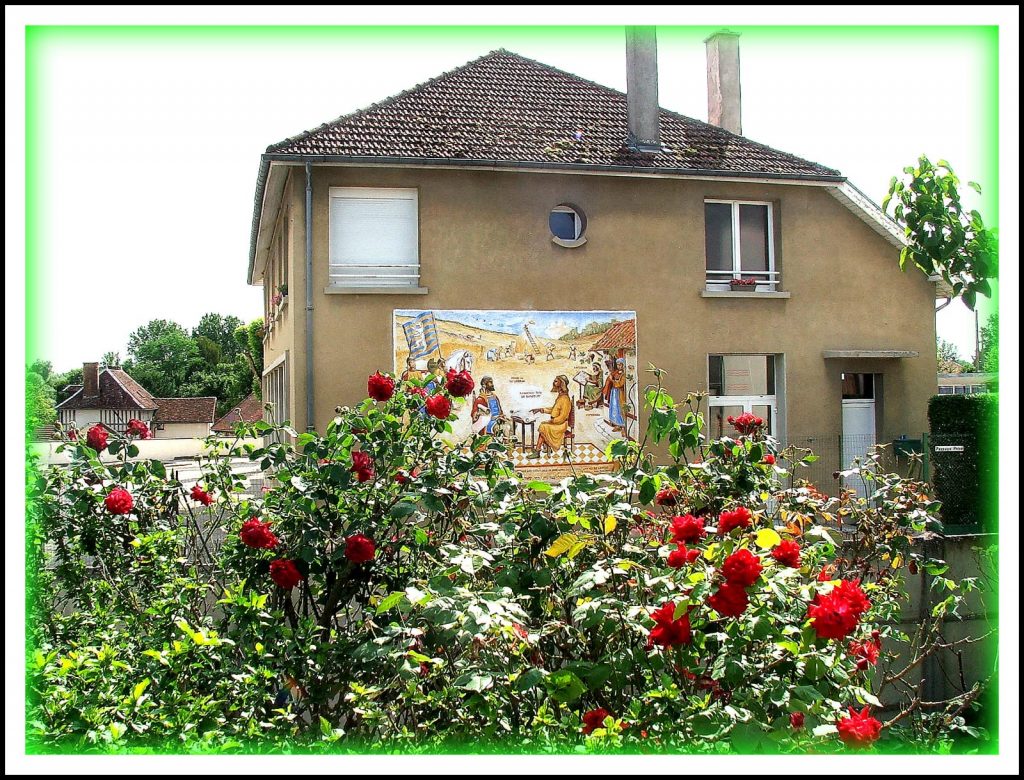
What are your current missions?
The Medieval Route of Rachi in Champagne is first and foremost a source of ideas for stakeholders and partners in the creation of projects (research, content, organisation, etc.) based on the Council of Europe’s 5 criteria. A concrete example of this is the ‘Rachi itineraries’.
It supports the development of players’ projects, in terms of engineering for cross-disciplinary actions such as networking, marketing, promotion, consultancy, signage, etc. It brings together all the players with the aim of creating a regional dynamic and offering a genuine tourist itinerary to people interested in Rachi in Aube.
There are currently 6 sites of tourist interest to discover in Aube: the Rachi Institute, the Maison Rachi, the former Jewish quarter of Troyes (including the Quartier St Frobert and the Moretti Memorial) and the 3 frescoes on the ‘Rachi Trail’ in Dampierre, Ramerupt and Lhuître. At the same time, there are a number of one-off offers (guided tours, educational activities for schools, etc.).
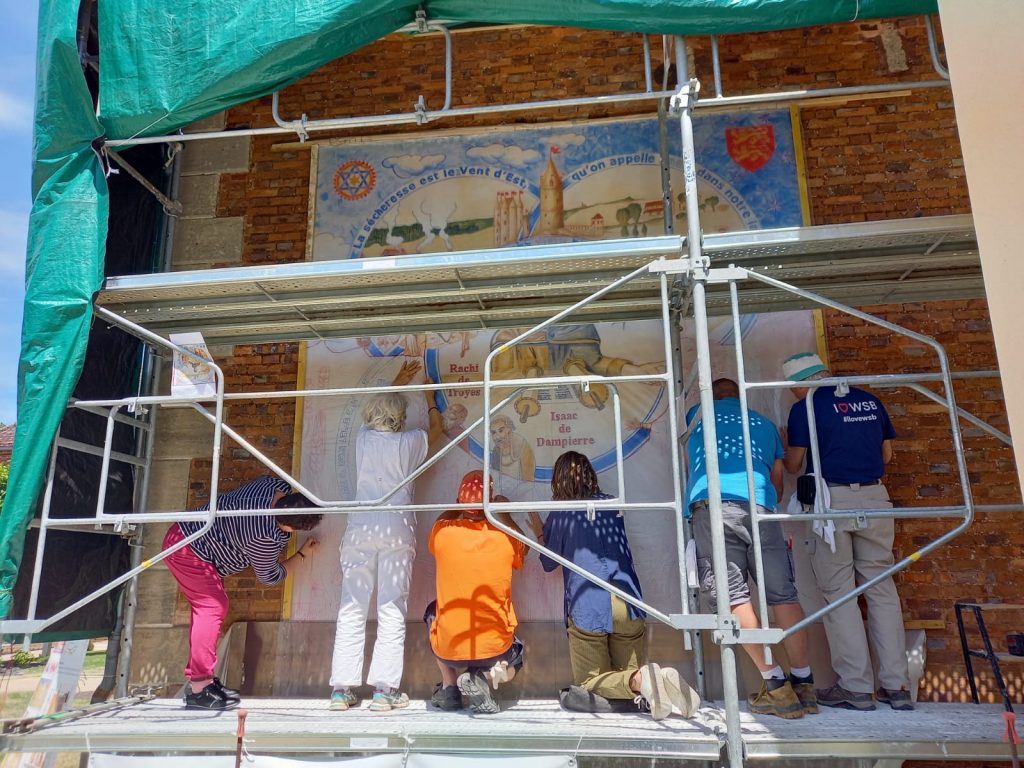
Can you tell us what progress has been made on the Medieval Route of Rachi in Champagne (RMRC) project?
Since 2019, the Medieval Route of Rachi in Champagne has been part of the European Route of Jewish Heritage within the Council of Europe’s Cultural Routes.
The RMRC is making great strides thanks to the support of Aube en Champagne Attractivité. The aim is to promote the memory of the twenty or so communes in the area that were home to prestigious Jewish communities in medieval times, which numbered almost 70 wise men in the 13th century, all of whom came from the school of Rachi. The Rachi Route is committed to reviving this memory for residents and visitors alike, notably through an original and innovative tourist and artistic project that brings people together as a community: the ‘Rachi Itineraries’. This involves creating frescoes measuring 4m by 3m on the walls of public buildings in the villages of Aube that hold this memory.
The models for the frescoes are created by artists, the work is carried out by the Association des Passeurs de Fresques and all the inhabitants of the villages are invited to take part in numerous workshops to learn more about the art of fresco painting and the Jewish heritage that belongs to them. To date, three frescoes have been created as part of the Medieval Route: Dampierre in June 2022, Ramerupt in June 2023 and Lhuître in September 2023, three villages in the north of Aube. Each fresco will be permanently installed and accessible to the public.
The project is supported by the French Ministry of Culture, the DILCRAH, the FMS, the FJF, as well as the département and local authorities. At the same time, in spring 2024, the RMRC produced a major effort to raise public awareness. This, thanks to the creation of a free bilingual tourist brochure, a bilingual tourism video, as well as training for professionals…
From April 2026, in collaboration with the Departmental Archives of Aube, it is planning an exhibition entitled ‘Being Jewish in Champagne in the Middle Ages: a land of men’. This exhibition will be inaugurated at the National Archives. An inter-museum partnership in Paris will help bring this heritage to the attention of as many people as possible. At the same time, the exhibition will be touring the villages of Aube and towns such as Provins, Sens and Châlons en Champagne, which belonged to the county of Champagne. It will also be on display in Germany.
A major effort to raise public awareness has been made so far with the creation of a free bilingual tourist brochure, as well as training for local tourism and culture professionals to help them take up this theme and invent new offers for the region. Since 2020, CulturistiQ has been offering tourist groups a number of ways to ‘meet Rachi’ through his writings, focusing on architecture, wine, honey, nature, study and intellectual exchanges in the Middle Ages.
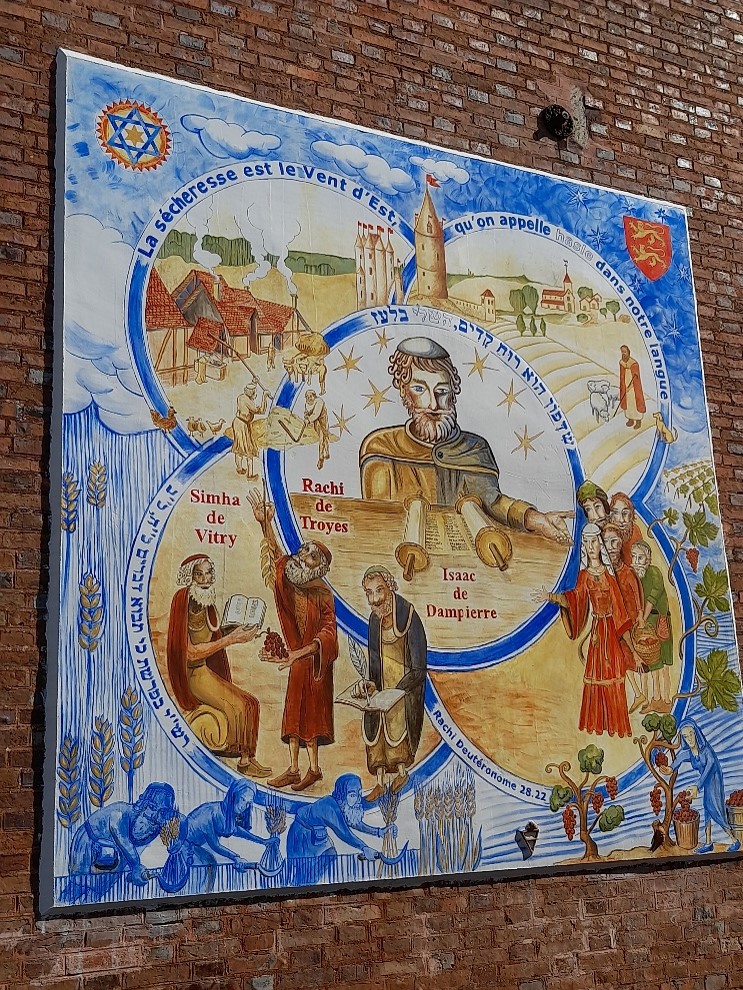
How do the inhabitants of these towns and villages react to sharing this cultural heritage?
Enhancing Jewish heritage for and with the inhabitants of villages that sometimes don’t even have a bakery was a challenge. When we were thinking about the frescoes, we involved local groups and school groups in the adventure. Firstly, through guided tours or lectures for the general public on the history of their village’s Jewish heritage. For the children, there were workshops in the classroom to help them understand the story of Rachi and raise their awareness of Hebrew through games, songs and artistic projects. Finally, everyone was invited to attend the week-long fresco project in their village.
Children take part with their teachers and then bring their parents or grandparents to the site. Adults are invited to workshops on the frescoes during the European Heritage Days.
As a result, they are better informed about the heritage being showcased and the Hebrew that appears on each fresco, and are more inclined to adopt the work, decipher it for their families and friends and protect it.
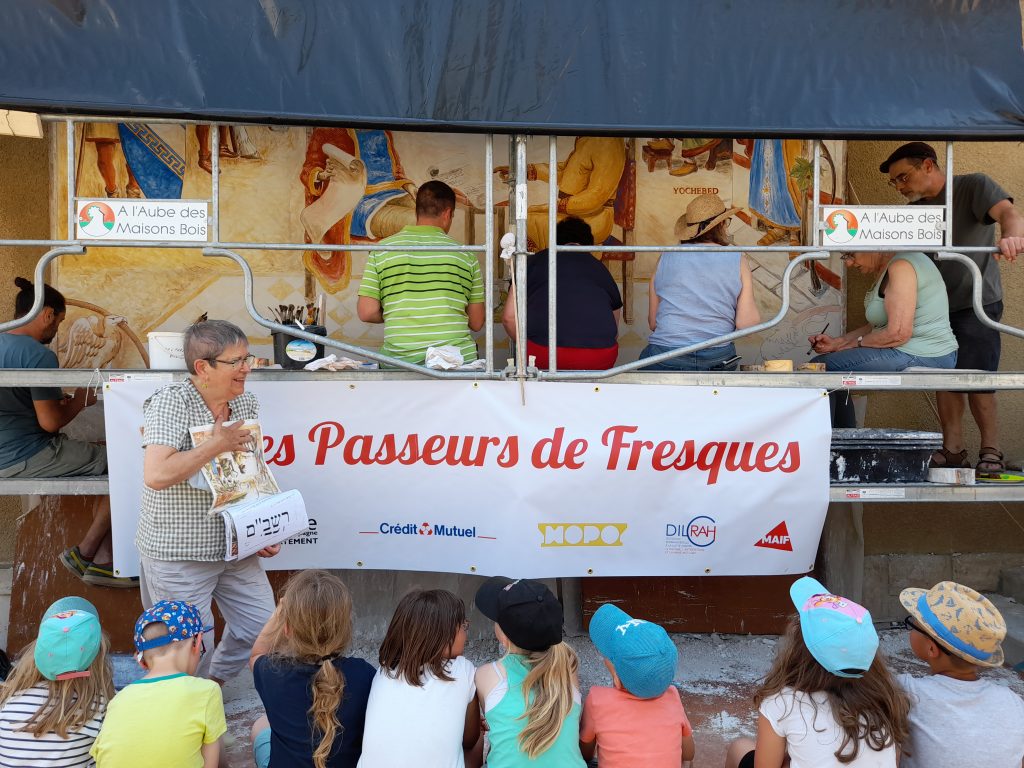
Is there a European dimension to these projects?
Of course there is. In fact, the Medieval Route of Rachi is part of a network of 20 European countries, all of which promote their ancient or modern Jewish heritage and are also part of this European Jewish Heritage Route. Links are strong and regular through the AEPJ.
An annual meeting enables those in charge of each Route to work together on various issues relating to the promotion of Jewish heritage and the sharing of good practice. In 2024, the Rachi Route took part in the Oxford meeting.
AEPJ also offers a number of communication tools and partnerships that give visibility to the various Routes: its website, the compilation of annual data from the Days of Jewish Culture, tourist information on World Jewish Travel, digital guided tours on J-Story, etc.
Finally, because of the influence of Rachi’s thought, work and disciples throughout Europe from the 12th century onwards, Rachi is fundamentally a European figure. He first studied in Mainz and Worms in Germany. Returning to Troyes to open his school, he received pupils from Spain and Lotharingia. Later, the Tossafists based in Ramerupt or Dampierre taught disciples from Prague, England, Barcelona, Italy, Kiev, etc. They all settled in many towns and villages in France and throughout Europe, where they exported his teaching method and commentaries. Later, with the invention of the printing press, his commentaries on the Bible and the Talmud were printed in towns that became references in Jewish studies, such as Vilnius in Lithuania with the Vilna Talmud printed at the end of the 19th century.
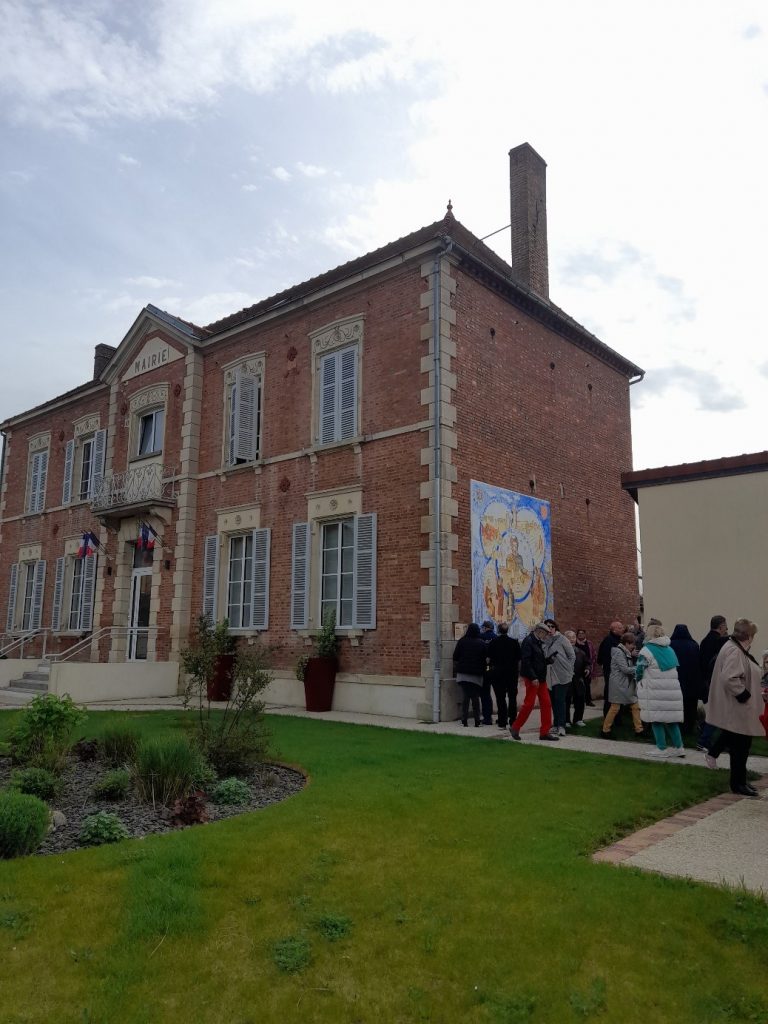
As a result of this European influence, in 2023, three local authorities, the Grand Est Region, the Département of Aube and the City of Troyes, in collaboration with the Central Consistory and with the support of the French government, have set up a Public Interest Grouping ‘Rachi – Troyes and Aube in the Grand Est Region’ (GIP Rachi), whose aim is to apply for the ‘European Heritage’ label for the memory of Rachi in 2025. In addition to these founding members, this GIP Rachi also brings together active members such as the Rachi Institute, Rachi House, Aube en Champagne Attractivité, Troyes la Champagne Tourisme, Communes Arcis Mailly Ramerupt, the town of Vitry le François and JECPJ-France. The application will be submitted to the French Ministry of Culture at the end of February and will represent France at the EU in its bid for the Label. This initiative demonstrates the strength and values that Rachi and its school embody for the local area, France and Europe.
The GIP Rachi’s mission is to support the application and to unite the players based on the Label’s criteria: multilingualism, sustainable tourism, new technologies, artistic creation, young people, etc. The GIP has recently proposed new mediation tools for European visitors: a digital discovery trail ‘in the footsteps of Rachi’, redesigned and enriched for visiting Troyes, and a treasure hunt ‘Who are you Rachi?’ for young people.
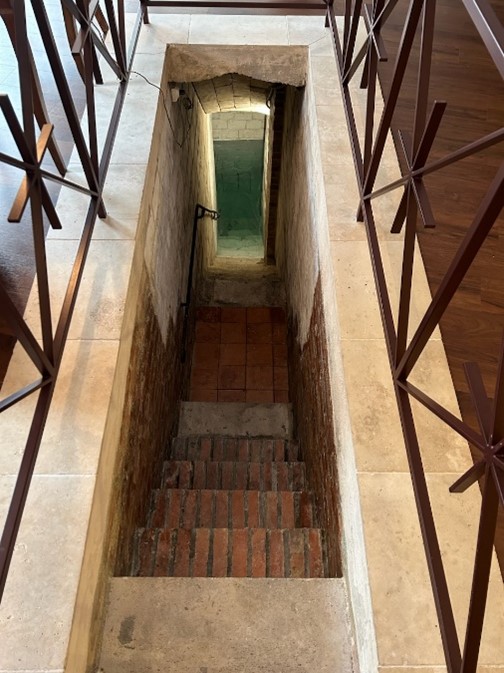
Have you discovered any sites recently linked to these initiatives?
In Châlons en Champagne, a site was recently assessed by a member of the GIP Rachi’s scientific council, an INRAP archaeologist, to confirm the existence of a mikveh dating from the end of the 14th century. This mikveh could eventually become part of a European Route of Mikvaoth to be built and be the subject of openings and mediation adapted to the public, a new point of tourist interest on the medieval Route of Rachi in Champagne.